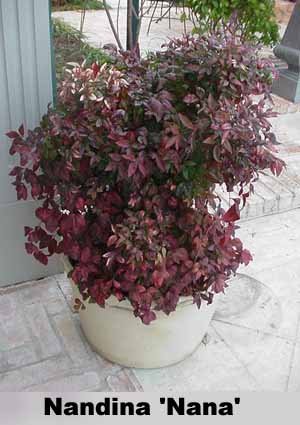Nandina is an old-fashioned evergreen shrub that has become one of my favorite shrubs. The foliage is dark green, but can turn orange, red, or maroon in the fall with bright red berries in the winter. Also known as Heavenly Bamboo for its slender stems and spreading growth pattern, Nandina domestica is drought tolerant and cold hardy. Nandina is also great because it can grow in sun, part shade, and shade.

Nandina requires very little care, but it does benefit from annual pruning to control its size. Nandina grows by sending up shoots from the base. They can grow quickly in the summer, some varieties reaching six to eight feet tall. January and February are the best months to prune nandina.
Nandina does not respond well to a hedge trimmer or pruning from the top. Too many years of being cut off at the top will make nandina look thin and leggy. Start by choosing the tallest shoots and cutting them with pruning shears or loppers about one inch from the ground. Continue to remove the tallest shoots out until you reach the height you want. The plant will send up new shoots from the base to make the nandina look full.
Dwarf varieties of nandina have gained popularity in recent years for their compact size and brightly colored foliage. These are hybrid varieties that are not invasive to Central Texas. Blush Pink, Flirt, Lemon Lime, and Obsession are all beautiful varieties with bright color and a more compact form. Because of their smaller size, these varieties need little to no pruning each year.
If you need a low-maintenance shrub that will add great color and shape to your landscape, try out a variety of nandina. For more information about shrubs or landscaping, contact Kate Whitney, Williamson County Extension Horticulturalist, at 512-943-3300.

